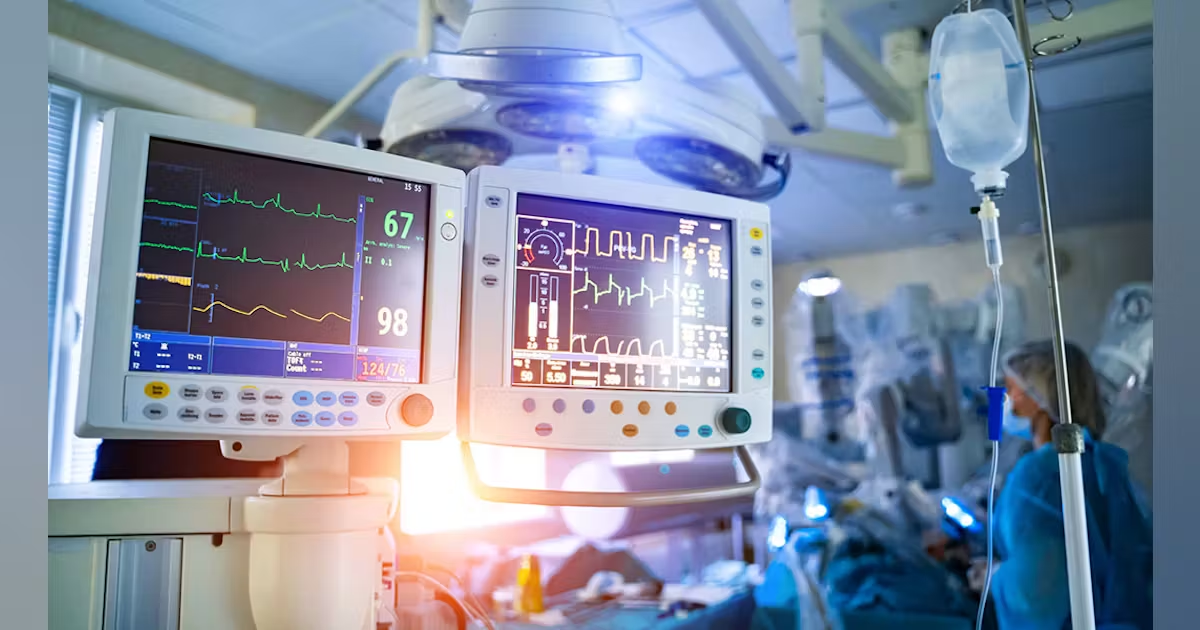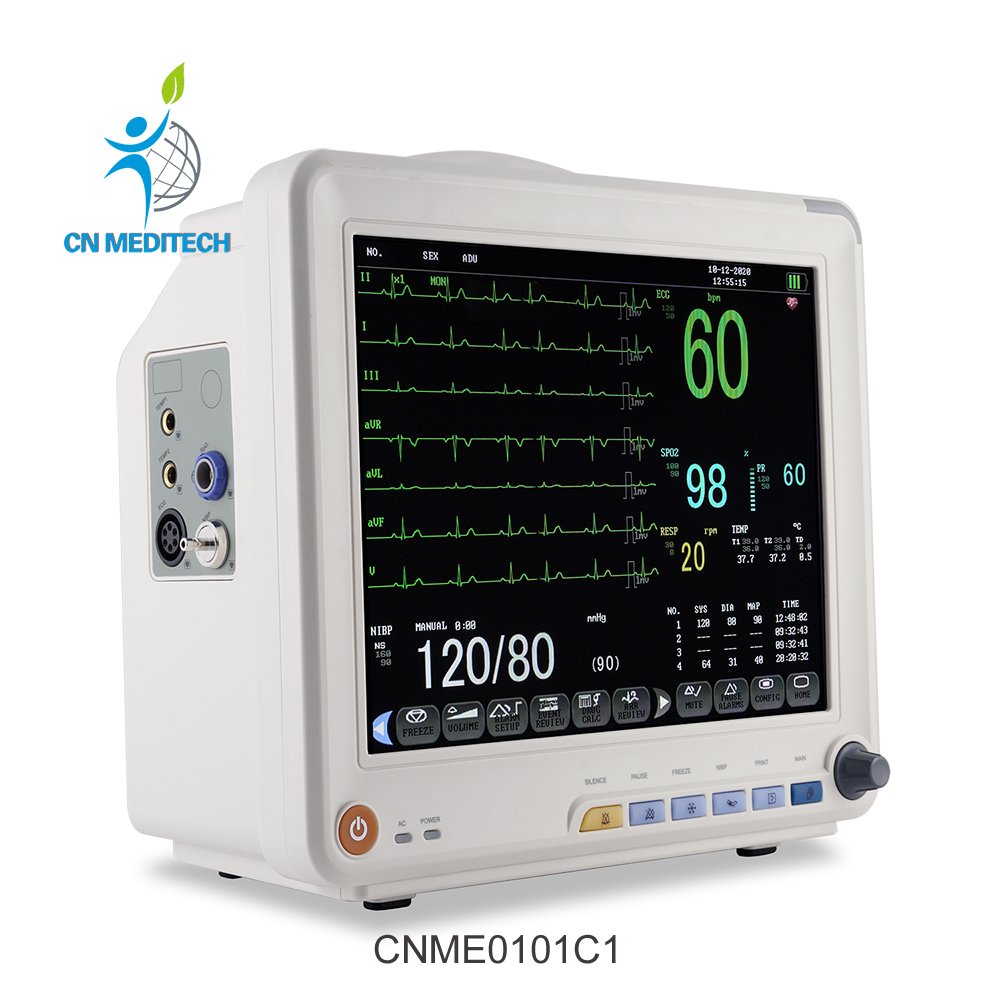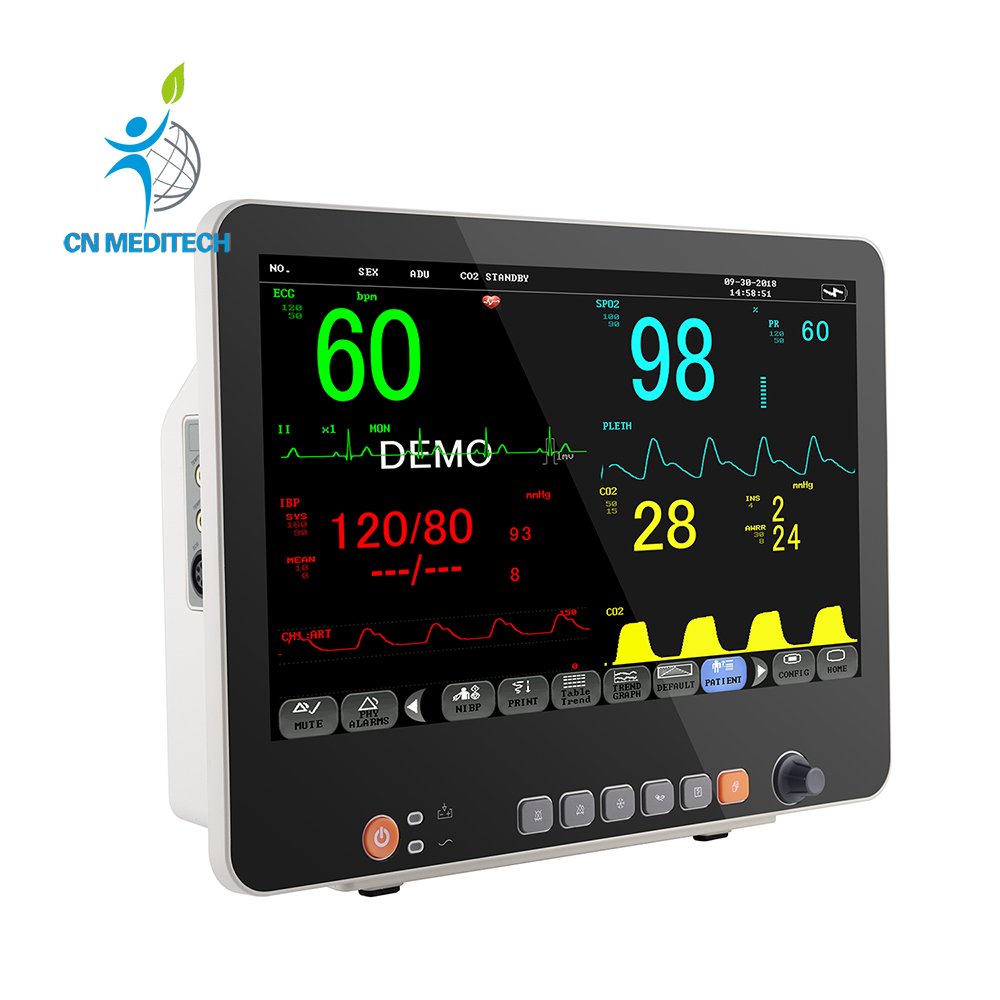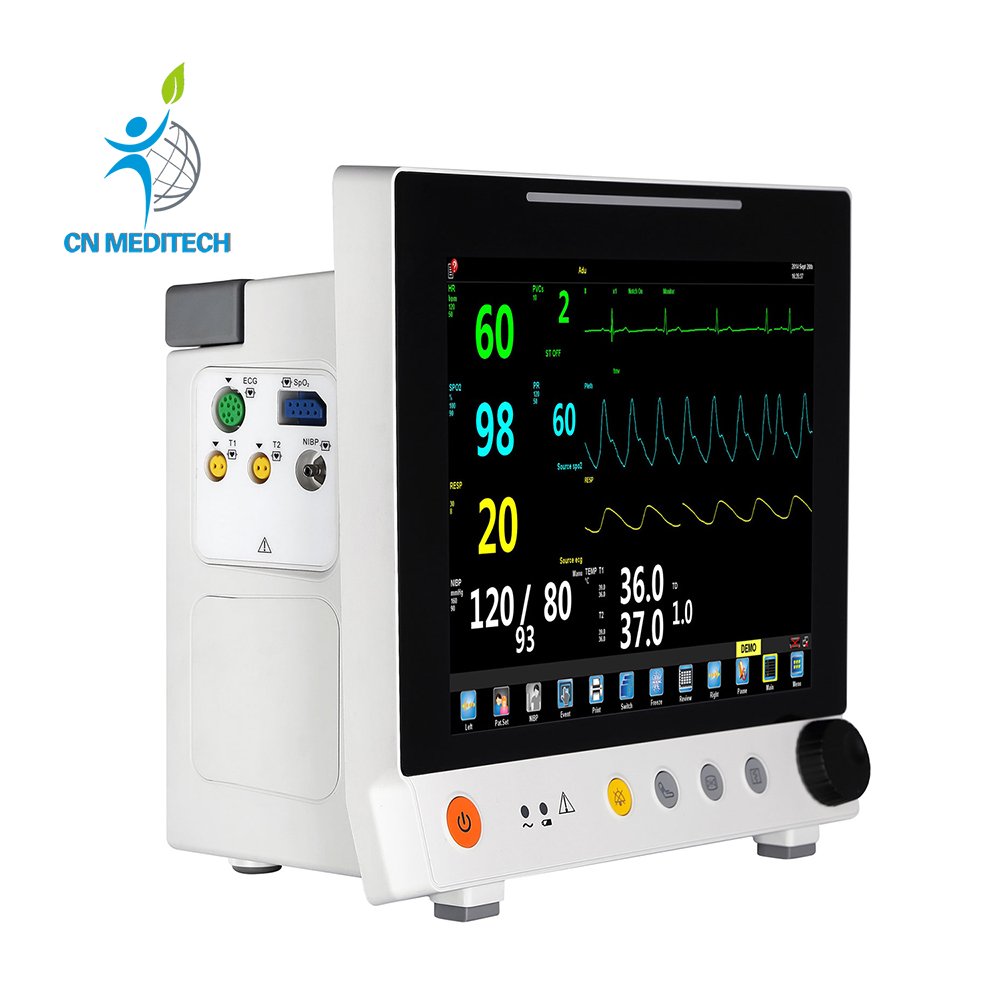Recent studies have found that the use of bedside patient monitors doubles the time patients spend with their doctors. Bedside monitors allow doctors to track and record real-time patient health information. This reduces the time it takes medical staff to obtain this valuable data.
Understanding how bedside monitors work and why they are appropriate for hospital settings is crucial for medical staff. Being able to record a patient’s vital signs in detail means that emergency situations can be quickly identified and addressed.
To learn all about bedside patient monitors, continue reading the list below.
How do bedside patient monitors work?
Patient monitors use specific types of sensors to monitor specific parts of a patient. These sensors are attached to a part of the patient’s body with a clip or sticky surface to prevent accidental damage.
For example, no matter what treatment a patient is receiving in the hospital, doctors will want to know how their heart is functioning. To do this, doctors will attach sensors to several places near or around the patient’s chest. Sometimes, sensors are also attached to the patient’s back.
The sensors pick up the heart rhythm and display it on a screen for the doctor to read. This allows the doctor to analyze the patient’s heart rhythm.
Knowing this information means that doctors can tell how healthy the patient is. The strength of the patient’s heart determines whether they are a good candidate for surgery or taking specific medications. Doctors also read this information in emergency situations, such as heart failure.
What do they monitor?
In addition to heart rate and rhythm, bedside monitors can be used to display and analyze several other features. The three most important aspects that bedside monitors display are body temperature, blood pressure, and blood oxygen (SpO2) levels.
Doctors use body temperature to determine if a patient has an infection. If the temperature is too high, it indicates that the patient’s body is fighting off a disease, which can help doctors make a clear diagnosis.
Modern bedside monitors can also show the amount of oxygen in a patient’s blood. If the oxygen level in the blood is too high, it can cause serious cell damage. If the oxygen level in the blood is too low, symptoms such as headaches and weakness can occur. These symptoms indicate respiratory distress.
Bedside monitors can help stop these effects before they cause any serious damage. If these medical issues are treated quickly, the patient has a better chance of recovery.
Bedside monitors can also send alerts to the medical team if an emergency occurs. If a patient’s blood pressure drops to a dangerous level or is too high, the nurse or doctor will know immediately. This can reduce the risk of serious side effects or death.
What types of monitors are available?
While bedside monitors have more detailed specifications, they are generally classified into three types. The type depends on the sensitivity and display content each monitor provides.
- Low-sensitivity monitors – These monitors can be used to display basic patient vital signs. They are often used for patients who cannot be admitted to the hospital during day surgery or those who have undergone partial cosmetic surgery.
- Medium-sensitivity monitors – These are used in different areas of the hospital, including surgical wards and emergency departments. They are able to provide more detailed patient vital sign monitoring information.
- High-sensitivity monitors – These monitors are generally able to provide the most detailed patient monitoring information. They are generally used in operating rooms and wards for patients with more serious illnesses or injuries.
All three types of monitors have their own uses within the hospital. Some monitors require more staff training than others, but all types are useful. Using them for specific purposes and patient situations ensures that the best equipment is left for those who need it most.
Who do they benefit?
Bedside patient monitors have many benefits for everyone who uses them, including doctors, nurses, and patients themselves.
For doctors, they provide a convenient way to read vital signs and make informed decisions based on the information displayed by the monitor. Doctors in all walks of life are busy. Without a patient monitor, obtaining these vital signs would be more time-consuming and interfere with other important tasks of the doctor.
Nurses use bedside monitors to continuously monitor patients. They can record any abnormal or worrisome changes in the monitor readings and quickly pass these changes on to the doctor, who will make the correct diagnosis based on these changes.
For patients, bedside monitors mean a higher quality of care. Medical staff are able to keep a close eye on patients using these monitors. This means that if something unusual is happening, treatment can be provided to the patient in a timely manner.
Are they difficult to operate?
This depends on the type of monitor the doctor uses. Most monitors are very easy to use. Medical staff learn how to operate a regular bedside monitor during training.
However, some newer models that offer additional features may be more difficult to understand. This is because they monitor new advanced information compared to older models. It is important for doctors and nurses in every medical field to become familiar with new models.
Common monitor problems that medical staff encounter include too much information and false alarms. Machine manufacturers are constantly addressing these types of problems.
Despite some flaws, bedside patient monitors are still an important part of any medical unit. The benefits they bring outweigh the problems they cause.
Can any healthcare facility use any type of monitor?
Any healthcare facility can purchase any type of monitor. However, just because you can does not mean you should. Purchasing a monitor without evaluating your facility’s needs is both unnecessary and costly.
For example, a GP practice does not need the kind of high-end monitors that are used in operating theatres. They do not typically offer beds for overnight care and therefore do not need equipment for this situation.
A large hospital that serves a wide range of patients requires a more expensive and powerful bedside monitor. These hospitals use these monitors to cope with the medical needs of a large number of patients. Without the best bedside monitor, tracking a patient’s vital signs can be difficult and time-consuming.
Before purchasing a bedside monitor, make sure you have considered the needs of your practice, staff and patients.
Are bedside patient monitors expensive?
The price of a bedside monitor depends on its features and level of modernization. It can range from less than $2,000 to more, depending on the needs of the hospital or healthcare facility.
The price will reflect the quality and features of the product. Creating a budget for a patient monitor can help healthcare professionals plan their budget and purchase the equipment according to their needs.
How to read the data from a patient monitor?
The display of a bedside monitor depends on the type of monitor used. However, there are several common features on a patient monitor that can be easily read.
Heart rate is usually indicated by bold, colored numbers, usually located in the upper right corner. The numbers are usually followed by the letters “HR” to identify it as heart rate. Sometimes “PR” is also used to indicate pulse rate.
Blood pressure readings can be identified by the letters that follow them. They are usually “SYST” and “DIAS.” Next to these letters are numbers that indicate the patient’s blood pressure.
The lines on the screen from left to right represent the patient’s electrocardiogram. The respiratory wave also appears as a line from left to right to indicate the patient’s breathing quality. It is usually located below the electrocardiogram line.
While other monitors will display different vital signs, the above information is almost always shown along with other displays. They are the most useful patient monitor features for medical staff to read and understand.
Bedside patient monitors make life easier for everyone
With bedside patient monitors, healthcare professionals can track, access, and record patients’ vital signs. This provides healthcare professionals with a convenient and efficient way to keep track of the health of all their patients.
Bedside monitors are just as important for patients. They ensure that the patient’s basic body functions are functioning efficiently and instantly alert healthcare professionals to any emergency situations. If you want to learn more about bedside patient monitors, visit this page. You’ll learn why these monitors are so widely used in hospitals around the world. If you have any questions, contact our dedicated support team.




